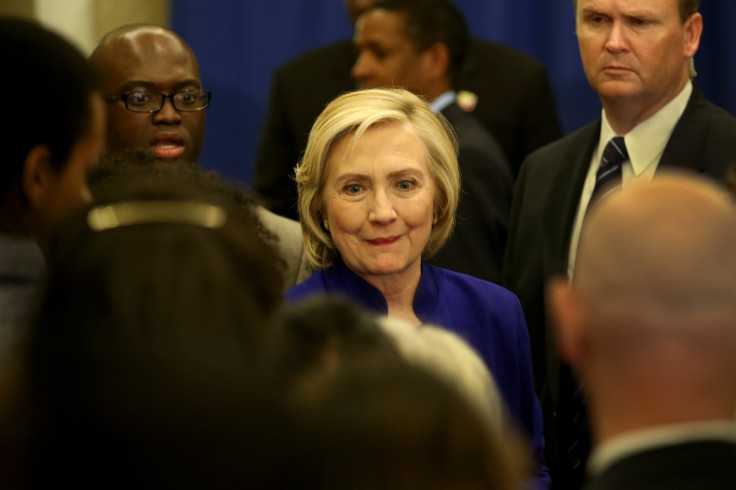Hillary Clinton 2016 Announcement Live Stream: Roosevelt Island New York Speech And Rally [VIDEO]

By choosing New York’s Roosevelt Island as the backdrop for her big speech Saturday, Hillary Clinton hoped to channel the the legacy of U.S. President Franklin D. Roosevelt and first lady Eleanor Roosevelt. FDR is known as a populist champion who ushered in the New Deal. And Eleanor Roosevelt was a prominent supporter of human rights around the world who was intimately involved in the push leading the United Nations to declare universal human rights.
In the weeks since her initial announcement as a candidate for the Democratic Party nomination in the presidential election next year, Clinton has steered further left than many had anticipated. She has announced she would want to extend President Barack Obama’s executive actions on immigration more than he did, bemoaned the accumulation of wealth at the top of the socioeconomic stratum and criticized unaccountable money in politics.
C-SPAN will be covering the full event on Roosevelt Island. Watch it here. Watch it on Clinton’s campaign website here. Or watch it below via YouTube.
Technically speaking, Clinton has been on the campaign trail since April 12, when she released an online video featuring a group of Americans talking about what was happening in their lives with a positive outlook on the future. “Americans have fought their way back from tough economic times, but the deck is still stacked in favor of those at the top. Every day Americans need a champion, and I want to be that champion,” Clinton said in the video.
Saturday, she hoped to continue on that path, positioning herself as a candidate working Americans can count on and relate to. The initial phases of her campaign have mainly featured her in small roundtable discussions in early primary states. However, the events have appeared scripted to some, as access to the discussions was heavily controlled.
The candidate’s latest attempts to seem less scripted and connected to everyday Americans is rather intentional. In 2008, when Clinton first sought the Democratic nomination and lost to Obama, a major criticism of her as a candidate was her image of being unapproachable.
Clinton is polling far ahead of any of her Democratic rivals, generally receiving the support of more than 60 percent of likely Democratic primary voters. She is also leagues ahead of any Republican in the race. Her numbers aren’t static, though, and she has had a slight decline in perceived trustworthiness recently.
Clinton’s rise to 2016 Democratic front-runner came after more than 20 years in the public eye. Married to President Bill Clinton, she was the first lady from 1992 to 2000, when she was particularly active in the role and pushed for child-care and health-care initiatives.
She became a U.S. senator for New York after leaving the White House in 2001, a position she kept until 2009 when she became secretary of state under Obama. During her time as a senator, she voted to go to war with Iraq, a decision that was later used against her in the 2008 campaign, and she has since called the vote a mistake. Her time as secretary of state was also not without issue.
Her positions on issues have changed considerably in the time since she began working in Washington. In just the years since her failed presidential run, she has changed her position on gay marriage, has changed her position on immigration and, recently, became much less confident in trade negotiations under way. On gay marriage, she currently says it should be a constitutional right; on immigration, she has supported an aggressive approach including amnesty and giving drivers’ licenses to undocumented immigrants; and on trade negotiations, after being very much in favor of the Trans Pacific Partnership, she now is cautious.
Clinton grew up in Park Ridge, Illinois. She went to Wellesley College, and earned a law degree at Yale Law School. She was the first lady of Arkansas between 1979 and 1981, as well as from 1983 to 1992.
© Copyright IBTimes 2025. All rights reserved.






















